Pistol Optics: The Trouble with the Dot
Reprinted from www.breachbangclear.com April 20, 2016
Written by David Merrill
Try a red dot sight on a pistol and not like it? Merrill may have a solution for at least one of your problems. Read up. Mad Duo
A red dot sight (RDS) on a handgun is increasingly common to behold. Though the idea isn’t new, the advent of smaller and more durable optics has helped it steamroll along to the point that they’re no longer considered an exotic spectacle. More people will try a handgun with a RDS this year than the last, and that trend will no doubt continue at least through the near future. That being said, not everyone thinks that they’re great.
Picking Up the Dot
A common complaint I hear from people first trying out a pistol equipped with a RDS is not being able to acquire the dot, or not being able to acquire it fast enough. Over the years there have been several different methodologies touted by various competitive shooters and instructors, with some being better than others. In this post I’ll outline some of these methods, and let you know which variations I find to work best.
I would be remiss if I didn’t mention that all these methods will require at least some work on your part. A red dot sight is going to have a taller height over bore (HOB) than your traditional sighting method, and thus will take some trigger time to get used to. Some mounts and optics are taller than others, but that may not be as big of a deal as you think.
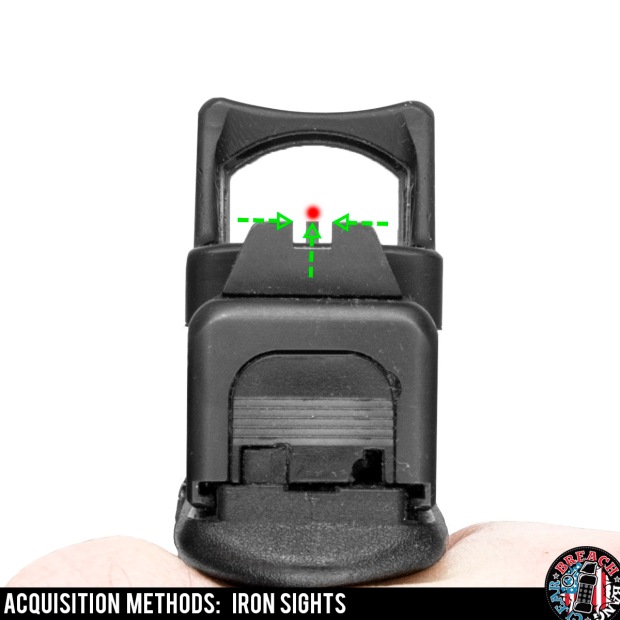
Iron Sights [AKA: ‘Training Wheels’]: This one of the most common methods people bring forth. If you’re running a RDS that co-witnesses with your irons, simply finding your traditional sight picture means that you also find the dot. It also tends to be slower, because you’re first aligning the front and rear sights, then finding the dot, and then finding the target. While target tracking with a red dot sight is faster than with irons, you’re limiting the speed in which you can pickup the dot. Furthermore, your iron sights can obscure the dot itself.
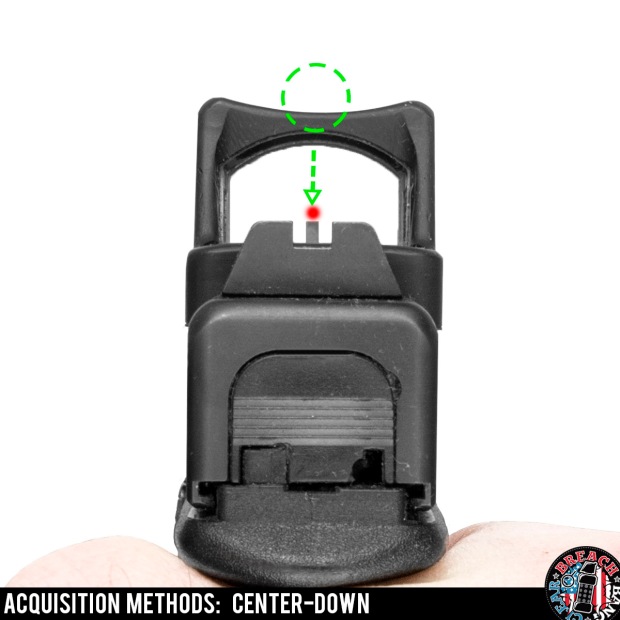
Center-Down: With this method you first look at the top of the optic at the center point, then bring your gaze down to acquire the dot. This will be faster than aligning your irons first, and works with pistols not equipped with usable iron sights.
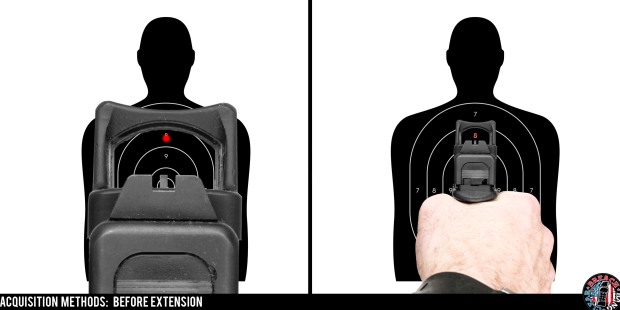
Before Extension [AKA ‘During Press Out’]: With this method you pick up the dot while it’s much closer to your eyeballs, then track and keep it during the press out. The idea is that the dot is faster to pick up while it’s closer. You may have to modify your drawstroke significantly to accomplish this, and you’ll probably look like you’re doing some weird Center-Axis-Relock type of shooting. I’ve never had much luck with this one.
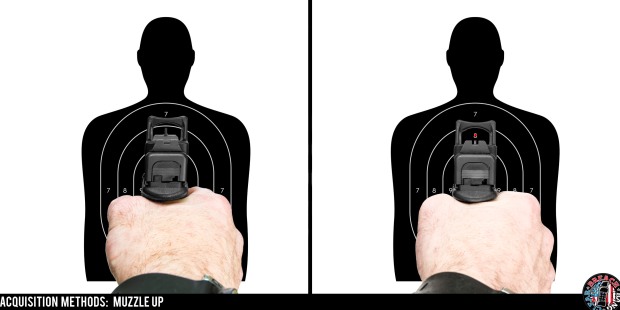
Muzzle Up: For this method, as you draw down on the target you start with a slightly elevated muzzle and acquire the dot as you level onto the target. This one is usually very quick to learn, especially if you already present the handgun in this manner.
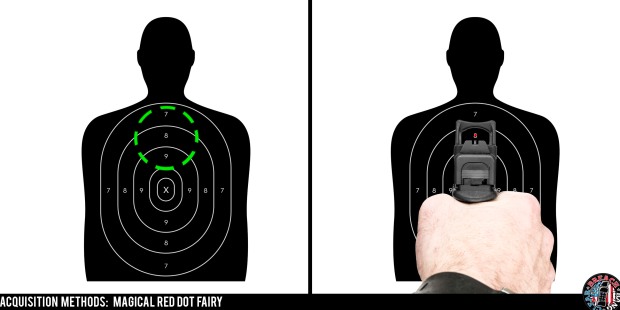
Magical Red Dot Fairy: This is my preferred method. You look at the target, present the pistol, and the dot just appears. Magic. Well okay, not magic, just trigger time. Think about how many thousands and thousands of times you’ve indexed a handgun; you’re just doing the same thing, but you don’t need to look for your sights. The dot just shows up.
Not all mounts, manufacturers, or slide modifications have the same reputation, and not all red dots are as durable as others. However, while quality red dots are tougher now than they’ve ever been in the past, if you actually use it, at some point you’ll break that shit. And even if you don’t make the glass or electronics go tits up, there are other ways for the dot to become unusable.
Batteries die. Rain or water droplets can make the dot bloom. The glass can fog up, especially when moving from an air conditioned automobile to a hot and humid environment. Dots that adjust automatically may not be bright enough to see if you’re in a dark area sighting in on a bright area. You can get the whole thing coated in mud.
The same way wearing a condom can prevent yet another trip to the STD clinic or making even more child support payments, an ounce of protection is worth a pound of cure. Swapping your batteries at regular intervals means you’re less likely to pick up a dead dot. Applying Rain-X or another form of water repellent mitigates many of your aqua issues. Having a holster that protects the dot from the environment will aid in keeping it clear from debris while crawling around–I think you see what I’m getting at.
But even with a great RDS, installed by the most reputable manufacturer, and with all of the preventative steps taken, you can still find yourself with a dead or obstructed dot. So what do you do? You have a lot of options actually, though some setups will have more options than others.
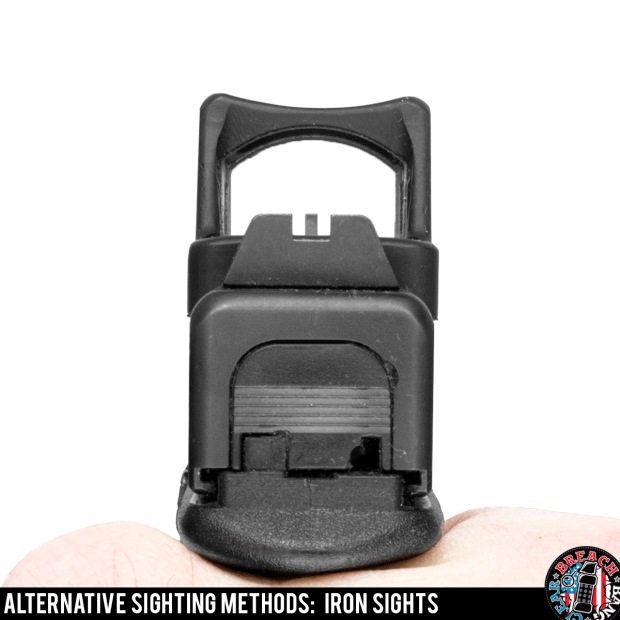 Use your Irons: That is, assuming you have them. Kinda goes without saying. However, if the window is obstructed, this isn’t always an option.
Use your Irons: That is, assuming you have them. Kinda goes without saying. However, if the window is obstructed, this isn’t always an option.
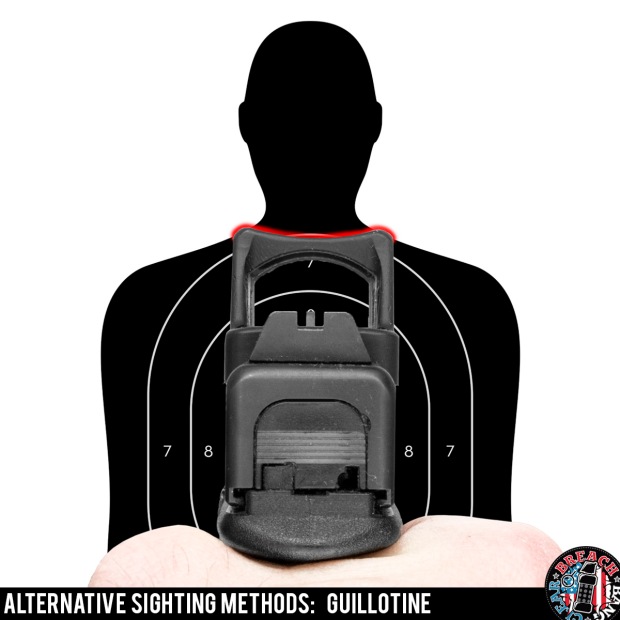
Guillotine Method: Use the top of your RDS to chop off the head of your target. It isn’t going to be the most precise shot, but at defensive ranges it should get you in the zone.
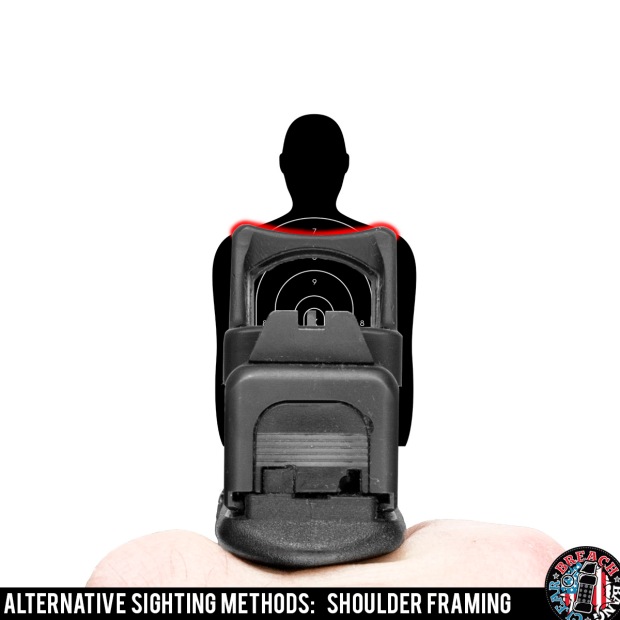
Shoulder Framing: Square the edges of your RDS with the target. Very similar to the Guillotine method. Also not incredibly accurate, and best if you’re square to what you’re shooting.
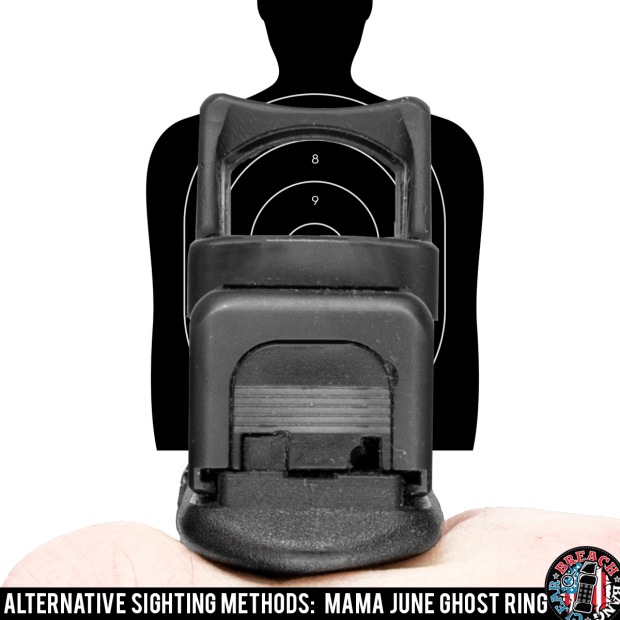
Mama June Ghost Ring: As in, a big fat ugly hole. This method works far better when a RDS is built with a longer tube, like a gun set up for the Bianchi Cup, as opposed to short, square[ish], and relatively flat bodied red dot sights like the RMR.
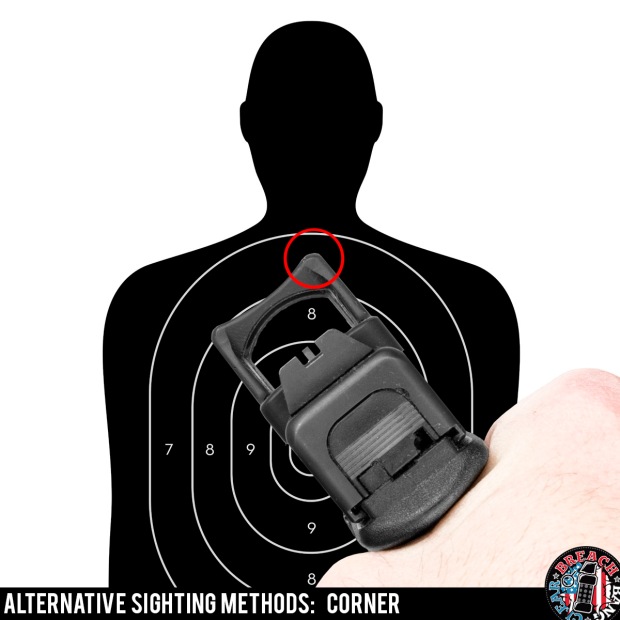
Using the Corner: Works best with an RMR or similar RDS with pronounced edges. Rotate the pistol inboard and the corner acts as a rudimentary reference point for lining up a shot. This works especially well when shooting one-handed, as many will already be canted inboard.
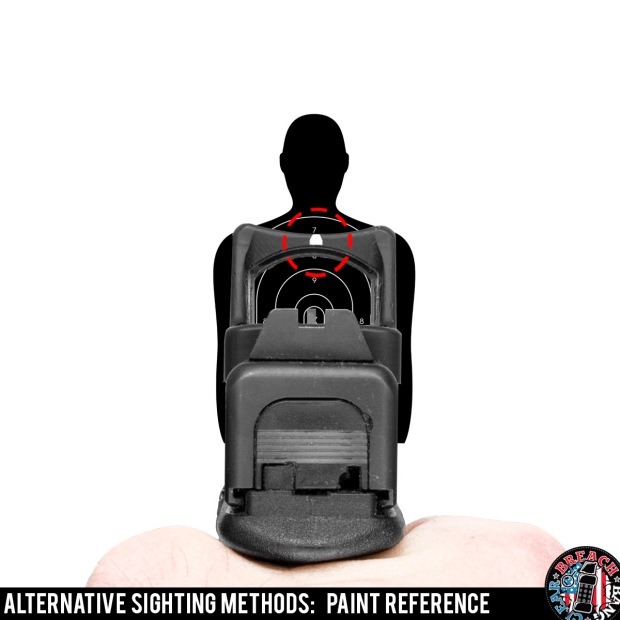
Painted Reference Point: You may find it distracting during normal shooting, but some like using a paint pen or whiteout marker to make their own emergency reference point on an optic.
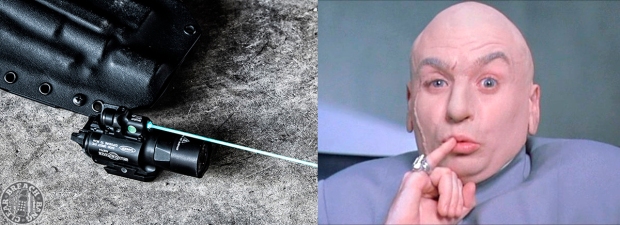
Fricken’ Laser Beams: Self-Explanatory, and a lot of options available.
In conclusion, if you’re red-dot-curious (we don’t judge–we’re past the 90’s now) or have had trouble picking up the dot in the past, give some of these methods a go. If you currently use a dot and haven’t trained with multiple alternative sighting techniques, I suggest you do so. A little bit of dry fire and natural point of aim (NPOA) exercises can go a long way to making you more proficient.
-DFM
About the Author: A combat veteran of the United States Marine Corps, Dave “Mad Duo Merrill” is a former urban warfare and foreign weapons instructor for  Coalition fighting men. An occasional competitive shooter, he has a strange Kalashnikov fetish the rest of the minions try to ignore. Dave is currently the operating manager and instructor for MilCopp Tactical. There he munificently promulgates superlative fighting advice. Translated, that means MilCopp teaches and advocates a constantly evolving, amalgamated method of military and law enforcement tactics. They leaven those TTPs with lessons learned from continued training and ongoing experience on the sharp end; these TTP’s are based on a combination of hard lessons learned and practical real-world results. Merrill, who has superb taste in hats, has been published in a number of places, the most awesome of which is, of course, here at Breach-Bang-Clear. He loves tacos, is kind of a dick and married way, way above his pay grade. You can contact him at Merrill(at)BreachBangClear.com and follow him on Instagram here (@dave_fm).
Coalition fighting men. An occasional competitive shooter, he has a strange Kalashnikov fetish the rest of the minions try to ignore. Dave is currently the operating manager and instructor for MilCopp Tactical. There he munificently promulgates superlative fighting advice. Translated, that means MilCopp teaches and advocates a constantly evolving, amalgamated method of military and law enforcement tactics. They leaven those TTPs with lessons learned from continued training and ongoing experience on the sharp end; these TTP’s are based on a combination of hard lessons learned and practical real-world results. Merrill, who has superb taste in hats, has been published in a number of places, the most awesome of which is, of course, here at Breach-Bang-Clear. He loves tacos, is kind of a dick and married way, way above his pay grade. You can contact him at Merrill(at)BreachBangClear.com and follow him on Instagram here (@dave_fm).


Leave a comment